This post contains affiliate links. This means I will make a commission at no extra cost to you should you click through and make a purchase [ “As an Amazon Associate, I earn from qualifying purchases.” ]. Read the full disclosure here.
Car Problem Symbols GuideMechanic.Com When it comes to car troubles, deciphering the symbols on your dashboard can often feel like trying to crack a secret code.
With so many different warning lights and symbols, it can be overwhelming to know what they mean and how serious the issue might be.
In this blog article, we will provide you with a detailed and comprehensive guide to help you understand these car problem symbols, so you can take appropriate action and keep your vehicle running smoothly.
Whether you’re a seasoned driver or a new car owner, being able to interpret these symbols is crucial for maintaining your vehicle’s health and safety.
From the infamous check engine light to the more obscure icons, we will cover all the essential symbols you may encounter on your dashboard.
See Also: 4L60E Bellhousing
By gaining a better understanding of these symbols, you’ll be equipped with the knowledge to address potential problems before they become major issues.
Car Problem Symbols – Check Engine Light
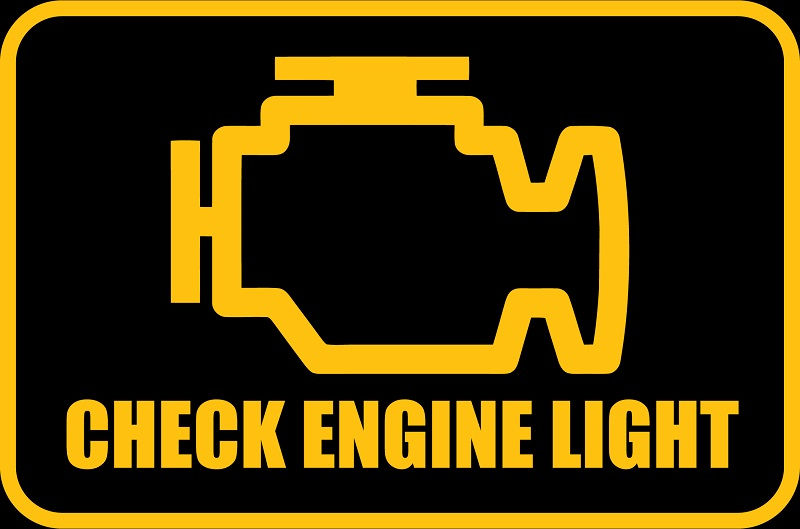
The check engine light is one of the most common symbols that drivers encounter, and it can indicate a wide range of issues.
It is a yellow or orange light in the shape of an engine. When this light turns on, it means that your car’s onboard diagnostic system has detected a problem with the engine or emissions system.
Causes
There are numerous potential causes for the check engine light to illuminate. It could be as simple as a loose gas cap, indicating an issue with the evaporative emissions system.
It could also indicate more serious problems, such as a faulty oxygen sensor, a misfiring engine, or a malfunctioning catalytic converter.
Diagnosis
When the check engine light comes on, it is essential to have your vehicle diagnosed promptly. Many auto parts stores offer free diagnostic scans that can pinpoint the specific issue triggering the light.
It is crucial not to ignore this warning, as unresolved problems can lead to further damage and costly repairs.
Consequences of Ignoring
Ignoring the check engine light can have severe consequences for your vehicle. It could lead to decreased fuel efficiency, engine damage, or even complete engine failure.
Additionally, certain issues may also affect your car’s emissions, leading to environmental pollution and potential legal consequences.
Actions to Take
If the check engine light comes on, it is recommended to take the following actions:
- Tighten the gas cap: In some cases, a loose gas cap might trigger the light. Simply tightening the cap might solve the issue.
- Check for obvious issues: Inspect your vehicle for any obvious signs of trouble, such as strange noises, leaks, or unusual smells.
- Get a diagnostic scan: Visit an auto parts store or a trusted mechanic to have a diagnostic scan performed to identify the specific problem.
- Address the issue: Once you know the cause of the check engine light, take the necessary steps to address the problem. This might involve repairing or replacing faulty components, sensors, or systems.
- Clear the code: After addressing the issue, it’s important to clear the diagnostic trouble code (DTC) stored in your car’s computer system. This can be done using a diagnostic tool or by disconnecting the car’s battery for a few minutes.
Car Problem Symbols – Battery Warning Light
Check out this Clore Automotive Jump-N-Carry JNC770R 1700 Peak Amp Premium 12 Volt Jump Starter – Red
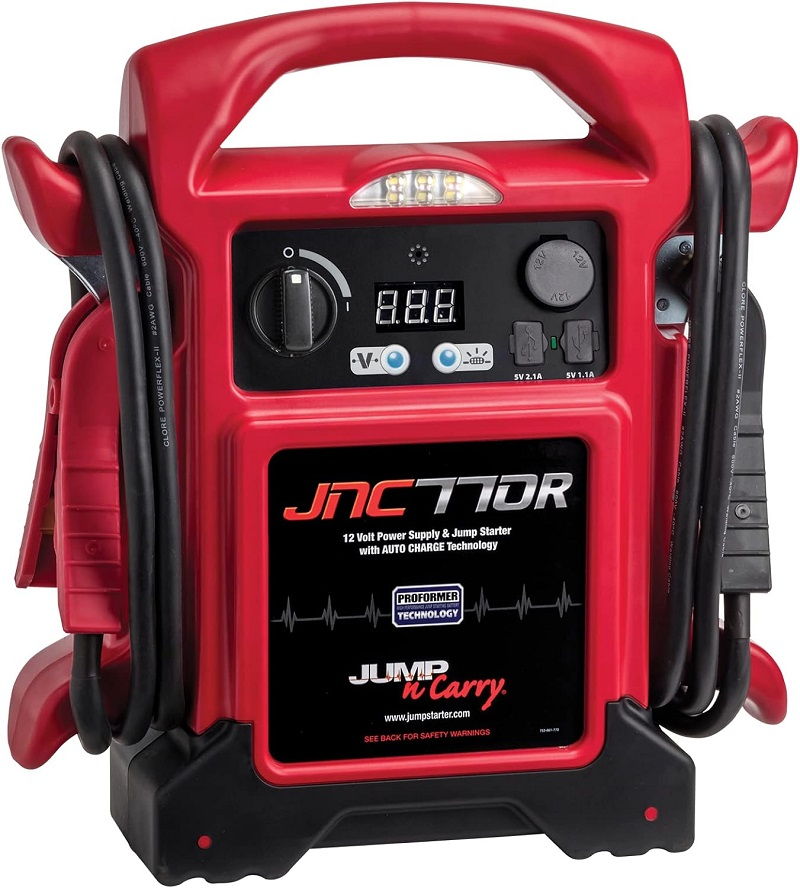
The battery warning light is usually a symbol shaped like a battery or may simply say “BATT” or “ALT.” When this light illuminates on your dashboard, it indicates a problem with your car’s battery or the charging system.
Causes
There are a few potential causes for the battery warning light to come on. It could be due to a failing alternator, a loose or corroded battery terminal, a broken serpentine belt, or a faulty voltage regulator.
Diagnosis
If the battery warning light comes on, it is advisable to have your vehicle’s charging system checked. A mechanic can perform tests to determine if the problem lies with the battery, alternator, or other components.
Consequences of Ignoring
Ignoring the battery warning light can lead to a dead battery, leaving you stranded and unable to start your vehicle.
In some cases, it could also cause damage to other electrical components, such as the starter motor or ignition system.
Actions to Take
If the battery warning light illuminates, follow these steps:
- Check the battery connections: Ensure that the battery terminals are clean, tight, and free from corrosion. If necessary, clean the terminals and tighten any loose connections.
- Inspect the serpentine belt: Examine the condition of the serpentine belt that drives the alternator. If it appears worn, cracked, or damaged, it may need to be replaced.
- Test the alternator: Use a multimeter to check the output voltage of the alternator. If it is not within the specified range, the alternator may need to be repaired or replaced.
- Replace the battery: If the battery is old or not holding a charge, it may need to be replaced. Consult your vehicle’s manual or seek professional advice to ensure you select the correct battery for your car.
Car Problem Symbols – Oil Pressure Warning Light
Check out this Valvoline High Mileage with MaxLife Technology SAE 5W-30 Synthetic Blend Motor Oil 5 QT
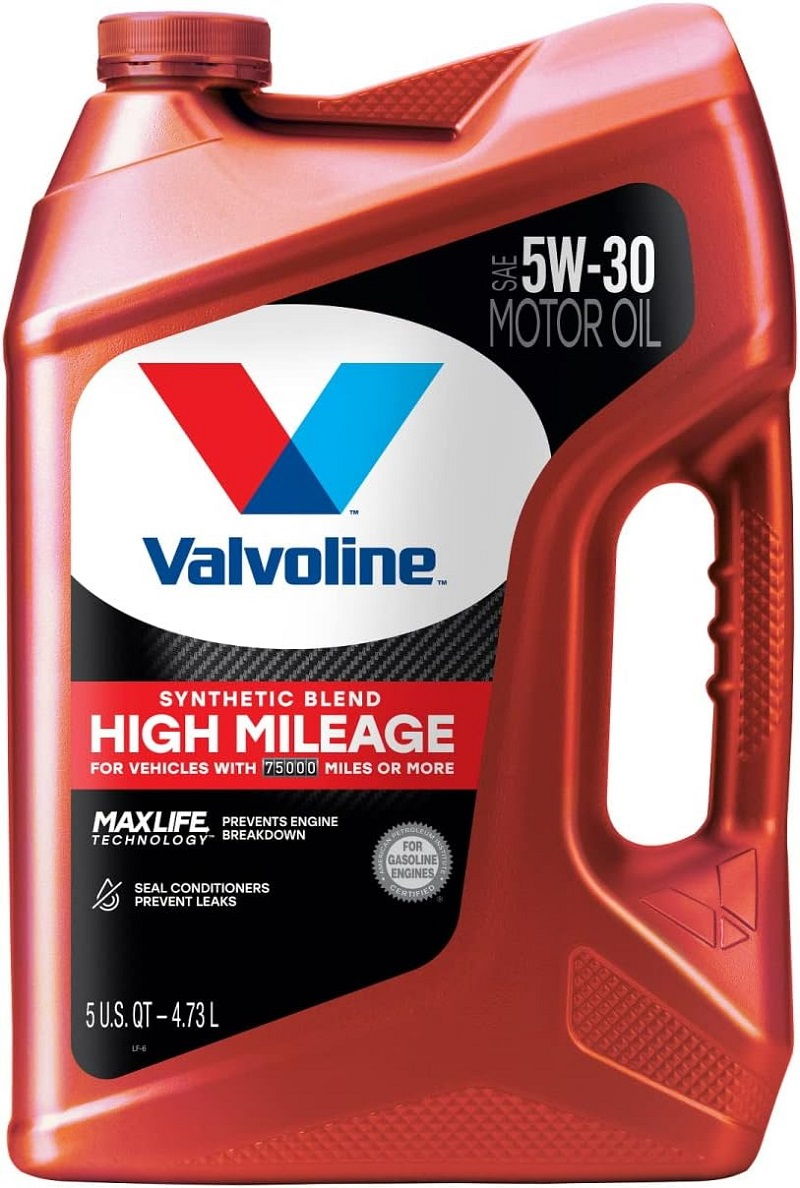
The oil pressure warning light is typically depicted as an oil can or an oil pressure gauge. When this light turns on, it indicates a problem with your car’s oil pressure, which is essential for proper lubrication and protection of the engine.
Causes
There are several potential causes for the oil pressure warning light to illuminate. It could be due to low oil level, a faulty oil pump, a clogged oil filter, or an internal engine problem.
Diagnosis
If the oil pressure warning light comes on, it is crucial to address the issue promptly. Begin by checking the engine oil level using the dipstick.
See Also: Chrysler 300 Catalytic Converter
If the oil level is low, top it up to the recommended level. If the oil level is adequate, it is advisable to have a mechanic perform a thorough inspection to determine the cause of the low oil pressure.
Consequences of Ignoring
Ignoring the oil pressure warning light can lead to severe engine damage. Insufficient oil pressure can cause increased friction between moving parts, leading to excessive wear, overheating, and even engine seizure.
Actions to Take
If the oil pressure warning light illuminates, follow these steps:
- Check the engine oil level: Use the dipstick to check the oil level. If it is low, add the appropriate type and amount of oil as recommended by the manufacturer.
- Inspect for oil leaks: Examine the engine and surrounding areas for any signs of oil leaks. Leaks can lead to low oil pressure, so it is essential to identify and repair them promptly.
- Replace the oil filter: A clogged oil filter can restrict oil flow and cause low oil pressure. If the oil filter is due for replacement, follow the manufacturer’s recommendations and replace it accordingly.
- Have the oil pressure checked: If the above steps do not resolve the issue, it is advisable to have a mechanic check the oil pressure using specialized tools. They can diagnose any problems with the oil pump or internal engine components.
Car Problem Symbols – Tire Pressure Monitoring System (TPMS) Warning Light
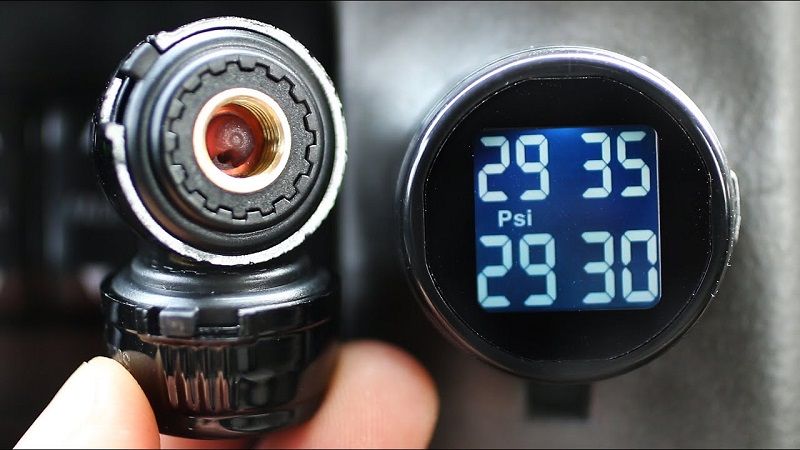
The TPMS warning light looks like an exclamation point inside a tire-shaped symbol. Its purpose is to alert you when the tire pressure in one or more of your vehicle’s tires is low, potentially indicating a puncture or underinflation.
Causes
Low tire pressure can be caused by various factors, such as changes in temperature, punctures, leaks, or improper inflation. The TPMS warning light may come on if the pressure in any of your tires falls below the recommended level.
Diagnosis
If the TPMS warning light illuminates, it is essential to check the tire pressure as soon as possible. Use a tire pressure gauge to measure the pressure in each tire and compare it to the recommended pressure listed in your vehicle’s manual or on a sticker inside the driver’s door jamb.
Consequences of Ignoring
Ignoring the TPMS warning light can lead to several potential consequences. Underinflated tires can impair your vehicle’s handling and braking performance, decrease fuel efficiency, and increase the risk of tire blowouts or hydroplaning in wet conditions.
Actions to Take
If the TPMS warning light comes on, follow these steps:
- Check tire pressure: Use a tire pressure gauge to measure the pressure in each tire. If any tire is significantly below the recommended pressure, inflate it to the appropriate level. If you’re unsure about the correct pressure, consult your vehicle’s manual or seek professional advice.
- Inspect for punctures or leaks: Visually inspect each tire for any visible punctures, nails, or foreign objects embedded in the tread. If you notice any damage or signs of leakage, it may be necessary to have the tire repaired or replaced.
Monitor tire pressure regularly: To prevent
Monitor tire pressure regularly:
To prevent the TPMS warning light from reoccurring, it is important to monitor your tire pressure regularly. Check the pressure at least once a month and before long trips. Properly inflated tires not only improve fuel efficiency but also enhance safety and prolong the lifespan of your tires.
Replace damaged or worn tires:
If you discover any significant damage or excessive tread wear during your inspection, it is crucial to replace the affected tire(s). Driving on damaged or worn tires can compromise your vehicle’s performance and safety.
Consider investing in a tire pressure monitoring system:
If your vehicle does not have a built-in TPMS, you may want to consider installing an aftermarket tire pressure monitoring system. These systems provide real-time information about tire pressure, allowing you to monitor it more easily and accurately.
Car Problem Symbols – Brake System Warning Light
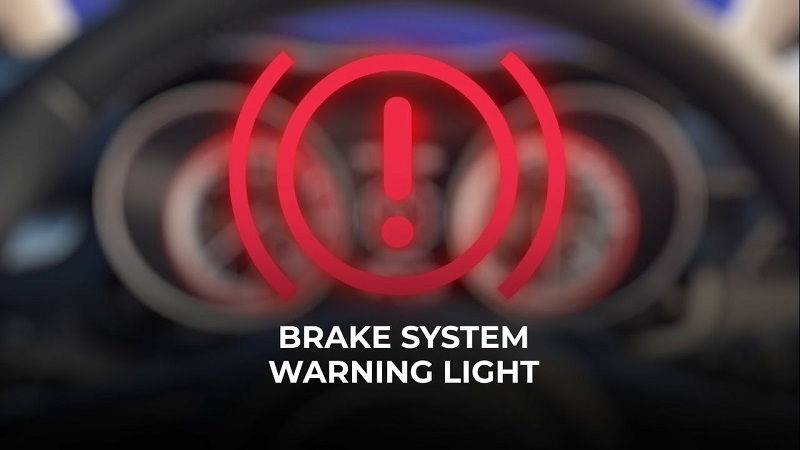
The brake system warning light is typically a circle enclosed in parentheses, representing brake pads or shoes. When this light comes on, it signifies an issue with your vehicle’s braking system, which is crucial for safe stopping and control.
Causes
Several factors can trigger the brake system warning light. It could indicate worn brake pads or shoes, low brake fluid, a malfunctioning brake sensor, a hydraulic system failure, or an issue with the anti-lock braking system (ABS).
Diagnosis
If the brake system warning light illuminates, it is important to address the issue promptly to ensure your safety on the road. Begin by checking the brake fluid level in the reservoir. If it is low, top it up with the recommended brake fluid. If the fluid level is adequate, it is advisable to have a mechanic inspect the brake system for any potential problems.
Consequences of Ignoring
Ignoring the brake system warning light can compromise your ability to stop safely. It may indicate worn brake pads or shoes, which can lead to decreased braking performance or even brake failure. Ignoring the light can also cause damage to other brake components, resulting in costly repairs.
Actions to Take
If the brake system warning light comes on, follow these steps:
- Check the brake fluid level: Locate the brake fluid reservoir under the hood and check the level. If it is low, top it up with the recommended brake fluid. Be cautious not to spill brake fluid on painted surfaces as it can cause damage.
- Inspect the brake pads or shoes: Visually inspect the brake pads or shoes through the wheels. If they appear excessively worn, with less than a quarter-inch of friction material remaining, they may need to be replaced.
- Check for leaks: Inspect the brake lines, calipers, and wheel cylinders for any signs of leaks. Brake fluid leaks can lead to a loss of hydraulic pressure and reduced braking performance.
- Test the brake pedal feel: Pay attention to the brake pedal’s responsiveness and feel. If it feels spongy, goes to the floor, or requires excessive force to engage, there may be an issue with the brake system that needs to be addressed by a professional.
Car Problem Symbols – Coolant Temperature Warning Light
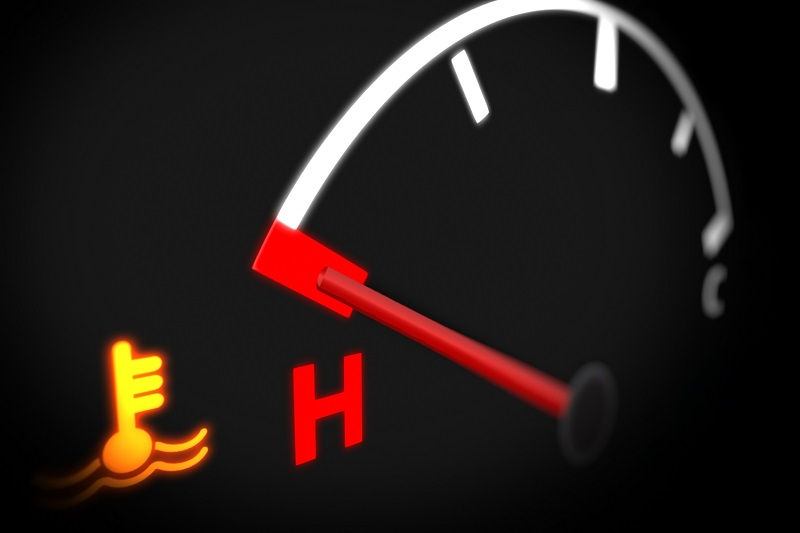
The coolant temperature warning light is typically represented by a thermometer submerged in fluid. When this light turns on, it indicates that the engine’s coolant temperature is too high, potentially leading to engine overheating.
Causes
Several factors can cause the coolant temperature warning light to illuminate. It may be due to a malfunctioning thermostat, a coolant leak, a faulty radiator fan, a failing water pump, or an issue with the cooling system’s circulation.
Diagnosis
If the coolant temperature warning light comes on, it is crucial to address the issue promptly to prevent engine damage. Begin by checking the coolant level in the reservoir when the engine is cool.
See Also: 2012 Buick Enclave Problems
If it is low, top it up with the recommended coolant. If the coolant level is adequate, it is advisable to have a mechanic inspect the cooling system for any potential problems.
Consequences of Ignoring
Ignoring the coolant temperature warning light can lead to severe engine damage. Overheating can cause the engine to warp or seize, resulting in expensive repairs or even the need for a complete engine replacement.
Actions to Take
If the coolant temperature warning light illuminates, follow these steps:
- Check the coolant level: When the engine is cool, locate the coolant reservoir and check the level. If it is low, add the recommended coolant until it reaches the proper level.
- Inspect for coolant leaks: Examine the engine and the surrounding area for any signs of coolant leaks. Puddles or stains near the radiator, hoses, or water pump could indicate a leak that needs to be addressed.
- Check the radiator fan: Start the engine and observe whether the radiator fan engages when the engine reaches operating temperature. If the fan fails to turn on, there might be a problem with the fan motor, relay, or temperature sensor.
- Test the thermostat: A malfunctioning thermostat may cause the coolant temperature to rise abnormally. A mechanic can test the thermostat’s functionality and replace it if necessary.
- Inspect the water pump: The water pump circulates coolant throughout the engine. If it is not functioning correctly, the coolant may not flow properly, leading to overheating. A mechanic can inspect the water pump and replace it if needed.
Car Problem Symbols – ABS Warning Light
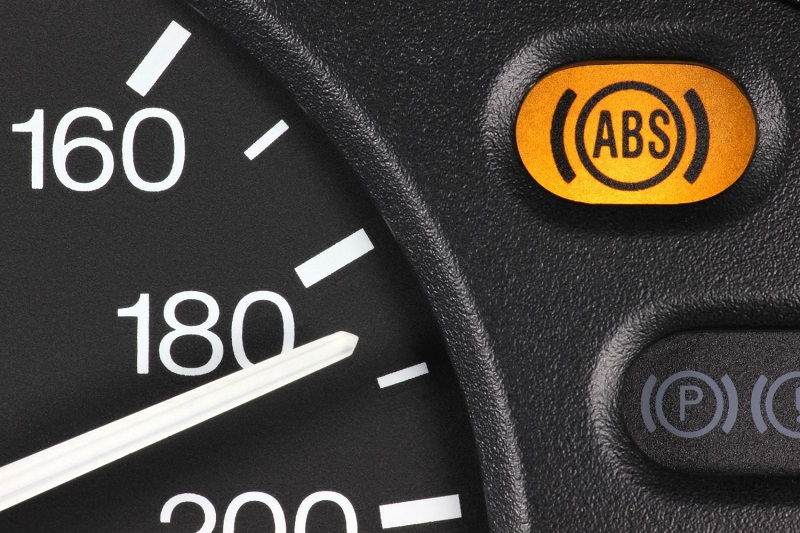
The ABS warning light is specifically related to your car’s anti-lock braking system. It is usually represented by the letters “ABS” inside a circle. When this light comes on, it indicates a problem with the ABS, which is designed to prevent the wheels from locking up during braking.
Causes
There are several potential causes for the ABS warning light to illuminate. It could be due to a faulty wheel speed sensor, a malfunctioning ABS module, a damaged ABS ring, or an issue with the hydraulic system.
Diagnosis
If the ABS warning light comes on, it is important to have your vehicle’s braking system inspected by a qualified technician. They can use specialized diagnostic tools to identify the specific cause of the ABS warning light and recommend the appropriate repairs.
Consequences of Ignoring
Ignoring the ABS warning light can compromise your vehicle’s braking performance, especially in situations that require sudden stops or on slippery roads. Without the ABS functioning properly, your wheels may lock up, increasing the risk of losing control of the vehicle and causing an accident.
Actions to Take
If the ABS warning light illuminates, follow these steps:
- Check the brake fluid level: Ensure that the brake fluid reservoir is filled to the recommended level. Low brake fluid can trigger the ABS warning light.
- Inspect the wheel speed sensors: The wheel speed sensors provide crucial information to the ABS system. Check each sensor for any signs of damage, such as loose wires or corrosion. Clean or replace any faulty sensors.
- Test the ABS module: The ABS module controls the operation of the system. A mechanic can perform tests to diagnose any issues with the module and determine if it needs repair or replacement.
- Check the ABS rings: The ABS rings are toothed rings located on the wheel hub or axle. Ensure they are intact and free from damage. Replace any damaged or missing ABS rings.
- Have the hydraulic system inspected: The hydraulic system plays a vital role in the ABS operation. A professional can check for leaks, blockages, or other malfunctions within the hydraulic system.
Car Problem Symbols – Airbag Warning Light
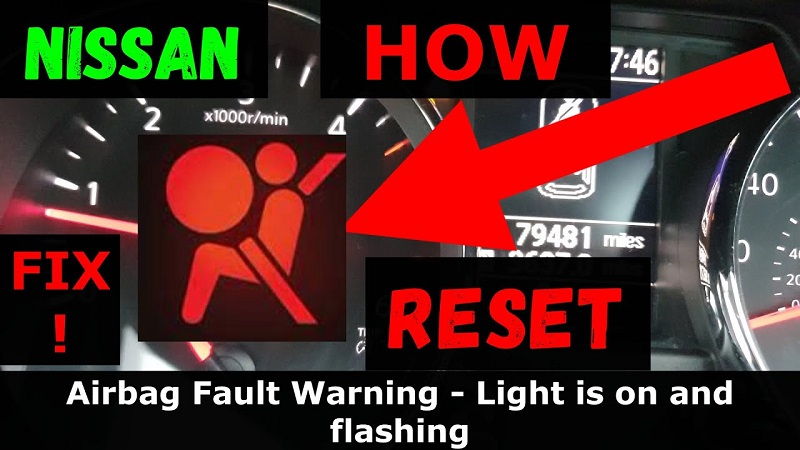
The airbag warning light is usually represented by an image of a person sitting with an inflated airbag in front. When this light comes on, it indicates a problem with your vehicle’s airbag system, which is designed to protect occupants in the event of a collision.
Causes
There are various potential causes for the airbag warning light to illuminate. It could be due to a faulty airbag sensor, a malfunctioning control module, a disconnected wiring harness, or a problem with the airbag itself.
Diagnosis
If the airbag warning light comes on, it is crucial to have your vehicle’s airbag system inspected by a qualified technician.
See Also: 7.3 Powerstroke PCM Failure Symptoms
They can use specialized diagnostic equipment to identify the specific cause of the warning light and recommend the necessary repairs.
Consequences of Ignoring
Ignoring the airbag warning light can put you at risk in the event of a collision. If the airbag system is not functioning correctly, it may fail to deploy or deploy unexpectedly, potentially causing serious injuries or fatalities.
Actions to Take
If the airbag warning light illuminates, follow these steps:
- Ensure seat belts are fastened: Until the airbag system is repaired, it is crucial to wear your seat belt properly to provide the primary protection in case of an accident.
- Check the wiring harness connections: Inspect the wiring harness connections under the seatsand ensure they are securely connected. Loose or disconnected wiring can cause the airbag warning light to come on.
- Have the airbag system inspected: It is important to have a qualified technician inspect the airbag system using specialized diagnostic equipment. They will be able to identify the specific cause of the warning light and perform the necessary repairs or replacements.
- Do not attempt DIY repairs: Airbag systems are complex and sensitive safety components. It is not recommended to attempt any repairs or replacements yourself, as improper handling can accidentally trigger the airbags or lead to further damage.
Car Problem Symbols – Power Steering Warning Light
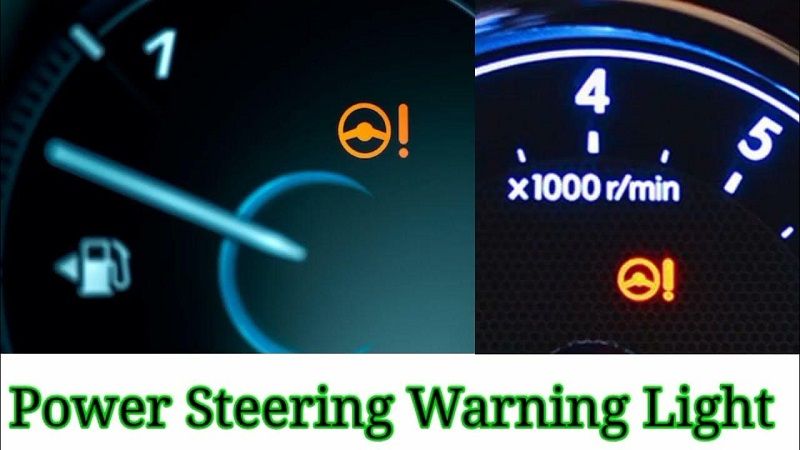
The power steering warning light is usually represented by a steering wheel with an exclamation point next to it. When this light comes on, it indicates a problem with your vehicle’s power steering system, which assists in turning the wheels with minimal effort.
Causes
There are several potential causes for the power steering warning light to illuminate. It could be due to low power steering fluid, a malfunctioning power steering pump, a broken drive belt, a faulty steering gear, or an issue with the electronic power steering system.
Diagnosis
If the power steering warning light comes on, it is important to address the issue promptly to ensure your ability to steer the vehicle safely. Begin by checking the power steering fluid level in the reservoir. If it is low, top it up with the recommended fluid. If the fluid level is adequate, it is advisable to have a mechanic inspect the power steering system for any potential problems.
Consequences of Ignoring
Ignoring the power steering warning light can make steering more difficult, especially at lower speeds or when making tight turns. It can also lead to increased wear on other steering components and potential damage to the power steering system, resulting in costly repairs.
Actions to Take
If the power steering warning light illuminates, follow these steps:
- Check the power steering fluid level: Locate the power steering fluid reservoir under the hood and check the level. If it is low, add the recommended power steering fluid until it reaches the proper level.
- Inspect for leaks: Examine the power steering system for any signs of fluid leaks. Leaks can cause a drop in fluid level and lead to power steering issues. If you notice any leaks, have them repaired promptly.
- Check the drive belt: A broken or loose drive belt can affect the operation of the power steering pump. Inspect the drive belt for any signs of wear, damage, or looseness. Replace the belt if necessary.
- Test the power steering pump: The power steering pump is responsible for pressurizing the fluid that assists in steering. If the pump is faulty, it may need to be repaired or replaced by a professional mechanic.
- Inspect the electronic power steering system: If your vehicle has an electronic power steering system, a malfunction in the electronic components could be causing the warning light to illuminate. A qualified technician can diagnose and repair any issues with the electronic system.
Conclusion
In conclusion, familiarizing yourself with the various car problem symbols on your dashboard is essential for maintaining your vehicle’s health and safety.
By understanding what these symbols mean, you can take appropriate action and prevent minor issues from escalating into major problems.
See Also: Power Inverter For Semi Truck
Remember, if you’re unsure about the meaning of a specific symbol or the appropriate steps to take, it’s always advisable to consult your car’s manual or seek professional assistance. Stay informed, stay safe, and keep your car running smoothly!
Related video of Understanding Car Problem Symbols: A Comprehensive Guide
- Custom Lifted Diesel Trucks for Sale - December 20, 2025
- New Lifted Diesel Trucks for Sale - December 19, 2025
- Old Lifted Diesel Trucks for Sale - December 18, 2025
